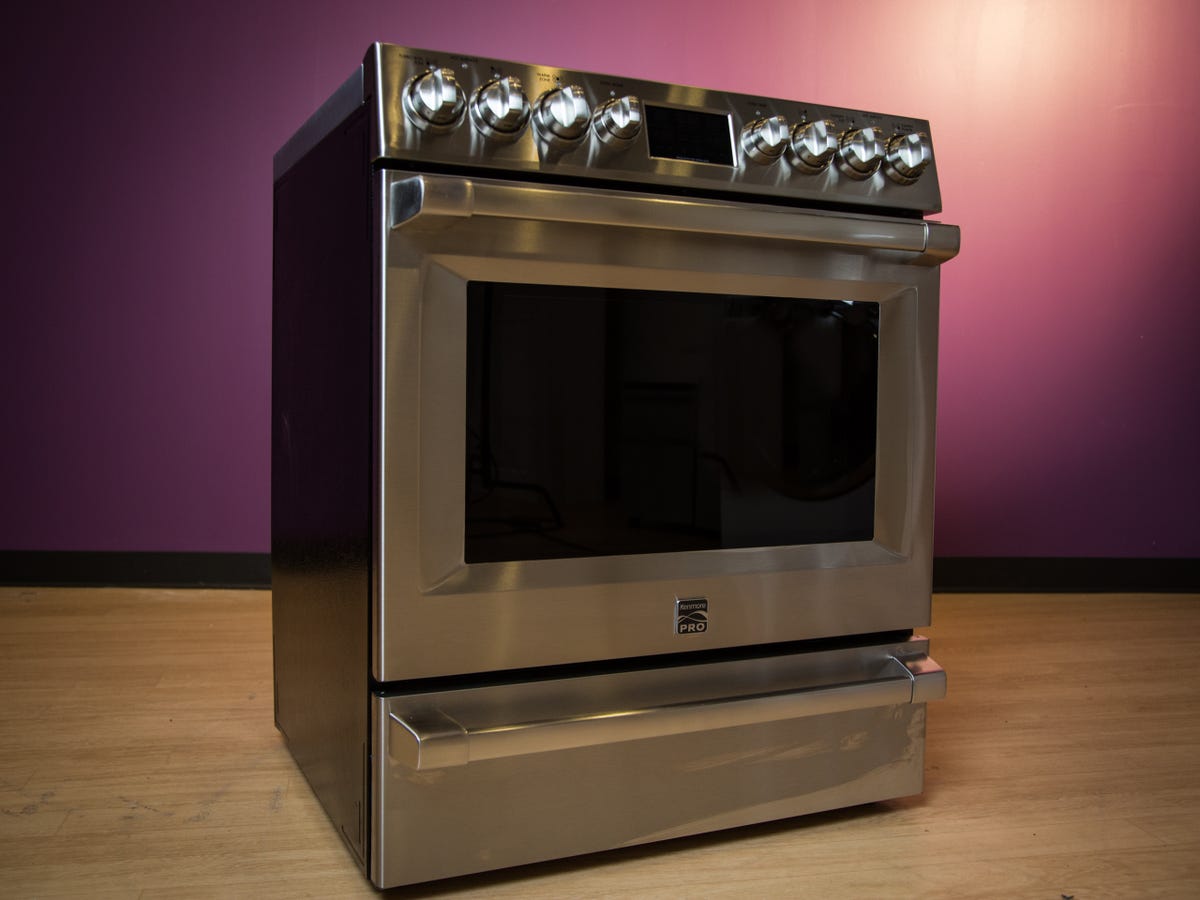Kenmore range flies too close to the sun, burns food in process
The Kenmore 92583 electric range from the brand's Pro line includes plenty of features to speed up cooking. But this $2,800 appliance's performance in cooking tests fell short of its aspirational name.

Here are some photos, illustrations and graphics that show the results of the cooking tests I performed on the Kenmore 92583.
First, let's learn more about the Kenmore 92583. This appliance is a 30-inch wide slide-in electric model that retails for $2,800. The range is a part of Kenmore's Pro line, a suite of appliances that include higher-end features meant to compete with luxury brands.
The range features a smooth electric cooktop with a Turbo Boil burner, a triple-element burner, two small burners and a warming zone.
The stainless steel range has a simple display screen and eight knobs that control the burners and oven settings.
The 5.1-cubic-foot oven includes two convection fans built into the back wall. The fans help circulate the heat throughout the oven cavity, which helps when you're cooking food on more than one rack. The oven also includes an Accela-Heat feature that is supposed to eliminate the need to preheat your food. More on this setting later.
Now, on to the food. The oven makes cooking meat easier with the inclusion of a meat probe that measures the internal temperature as you cook. You stick the probe into the meat, plug it into the oven wall and set your desired internal temperature on the control panel.
I used the meat probe when I cooked this chicken on the convection roast setting. Like similar models with optional temperature probe, the oven turns off when the meat has reached the desired temperature. However, you have to turn the oven back on and set the temperature if you decide you want to cook it for a little longer, which makes for a minor inconvenience.
This chart shows what happens to a small pot of tomato soup on different cooktops after I bring it to 165 degrees Fahrenheit and let it cook on low for 20 minutes. The Kenmore 92583's small burner did a good job of keeping a consistent temperature over that period of time.
The photos on the left show biscuits that I baked at the same time on the oven's convection bake mode. The biscuits in the top left picture baked on a higher rack than the biscuits in the bottom left picture. The convection fans did a good job of baking the biscuits to even level of brownness, with the exception of a few corners of the top sheet of biscuits. The pictures on the right show color interpretations of the biscuits' color.
I baked the biscuits in the top picture using the oven's traditional bake setting, so the convection fan wasn't in use. The oven once again provided pretty consistent browning to the biscuits, as you can see in the bottom color interpretation.
However, the backs of the biscuits located closest to the back wall of the oven cooked faster than any other side.
Here is where the Kenmore began to falter. I used the Accela-Heat feature to cook this frozen pizza. I followed both the package and oven directions: I put the pizza in the center of the oven, set the oven mode to Accela-Heat and set the temperature to 400 degrees Fahrenheit. After 22 minutes, the pizza's crust started to burn around the back and front edges. It was, however, cooked through.
The oven broiled hamburger patties quickly. Unfortunately, speed came at a price. The oven produced huge plumes of smoke during every broil test, and the exterior of the burgers were charred. This illustration shows how long it took for each of the patties to reach 145 degrees Fahrenheit.
I also cooked these cinnamon rolls with the Accela-Heat feature. The pastries teetered toward burnt, so they were crunchier than you'd expect from a cinnamon roll.

